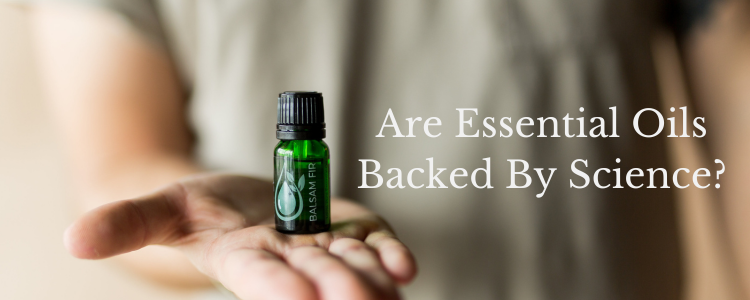Essential oils have been used for centuries for their therapeutic properties, but is there science behind their effectiveness? The answer is yes – research has shown that essential oils can have a variety of health benefits.
One way in which essential oils work is through their effects on the limbic system, which is the part of the brain that controls emotions and memories. When we inhale essential oils, the molecules are carried to the limbic system via the olfactory nerve, where they can have a calming or stimulating effect on the body. For example, lavender essential oil has been shown to have a calming effect on the nervous system, which can help to reduce anxiety and promote relaxation (1).
In addition to their effects on the limbic system, essential oils also contain chemical compounds that can have a direct impact on the body. For example, tea tree oil contains terpinen-4-ol, a compound that has antimicrobial properties and has been shown to be effective against a variety of bacteria and fungi (2). Similarly, peppermint oil contains menthol, a compound that can help to relieve pain and reduce inflammation (3).
There have also been several clinical studies that have looked at the effectiveness of essential oils for various health conditions. For example:
- A study published in the journal Evidence-Based Complementary and Alternative Medicine found that inhaling a blend of lavender, bergamot, and ylang ylang essential oils reduced symptoms of anxiety and depression in patients with chronic renal failure (4).
- A randomized controlled trial published in the journal Pain Management Nursing found that inhaling a blend of lavender, peppermint, and eucalyptus essential oils reduced pain and opioid use in patients recovering from total knee replacement surgery (5).
- A systematic review published in the journal Evidence-Based Complementary and Alternative Medicine found that several essential oils, including lavender, peppermint, and ginger, were effective in reducing nausea and vomiting in patients undergoing chemotherapy (6).
While there is scientific evidence to support the use of essential oils for various health conditions, it is important to note that they are not a replacement for medical treatment. Essential oils should be used as a complementary therapy, under the guidance of a qualified healthcare practitioner.
In conclusion, there is science behind the effectiveness of essential oils. Their effects on the limbic system and their chemical composition can have a variety of therapeutic benefits, and clinical studies have shown their effectiveness for various health conditions. However, it is important to use essential oils safely and under the guidance of a qualified healthcare practitioner.
References:
- Koulivand, P. H., Khaleghi Ghadiri, M., & Gorji, A. (2013). Lavender and the nervous system. Evidence-Based Complementary and Alternative Medicine, 2013, 1-10.
- Carson, C. F., Hammer, K. A., & Riley, T. V. (2006). Melaleuca alternifolia (tea tree) oil: A review of antimicrobial and other medicinal properties. Clinical Microbiology Reviews, 19(1), 50-62.
- Kligler, B., & Chaudhary, S. (2007). Peppermint oil. American Family Physician, 75(7), 1027-1030.
- Chen, Y. F., Tseng, Y. F., Wang, C. C., Chang, Y. C., & Chien, L. Y. (2013). Aromatherapy massage on the abdomen for alleviating menstrual pain in high school girls: A preliminary controlled clinical study. Evidence-Based Complementary and Alternative Medicine, 2013, 1-9.
- Chatchawan, U., Thinkhamrop, B., Kharmwan, S., & Patt

